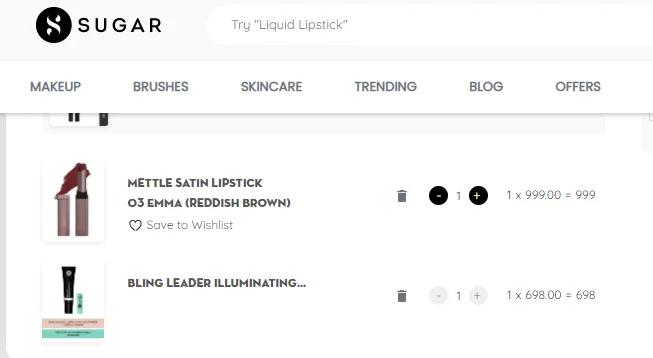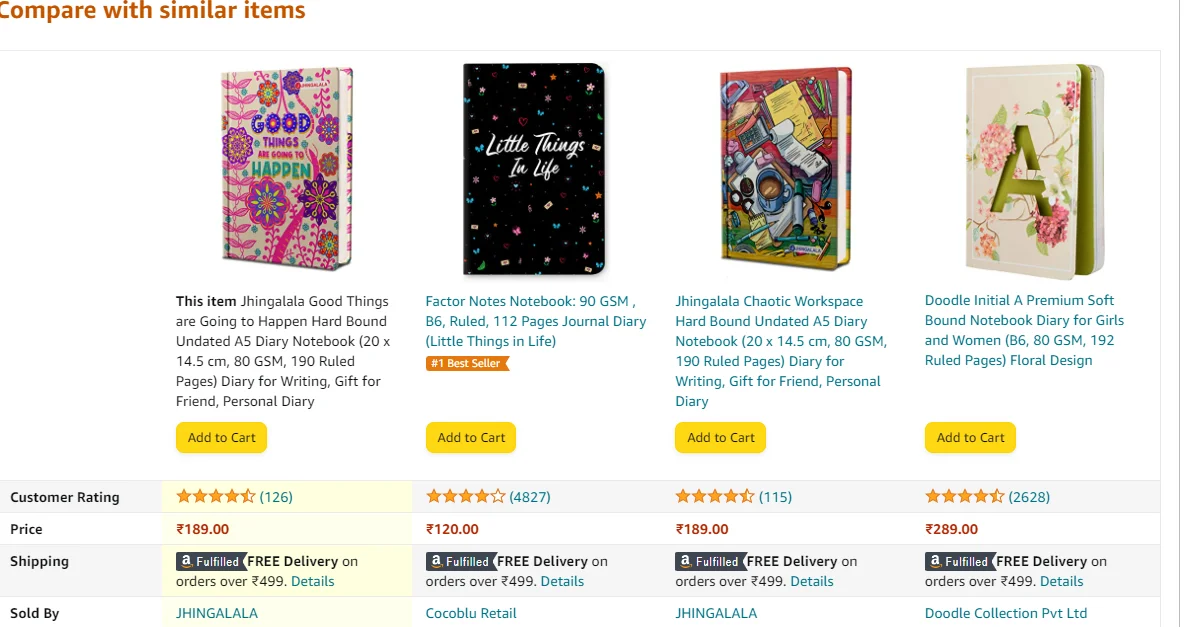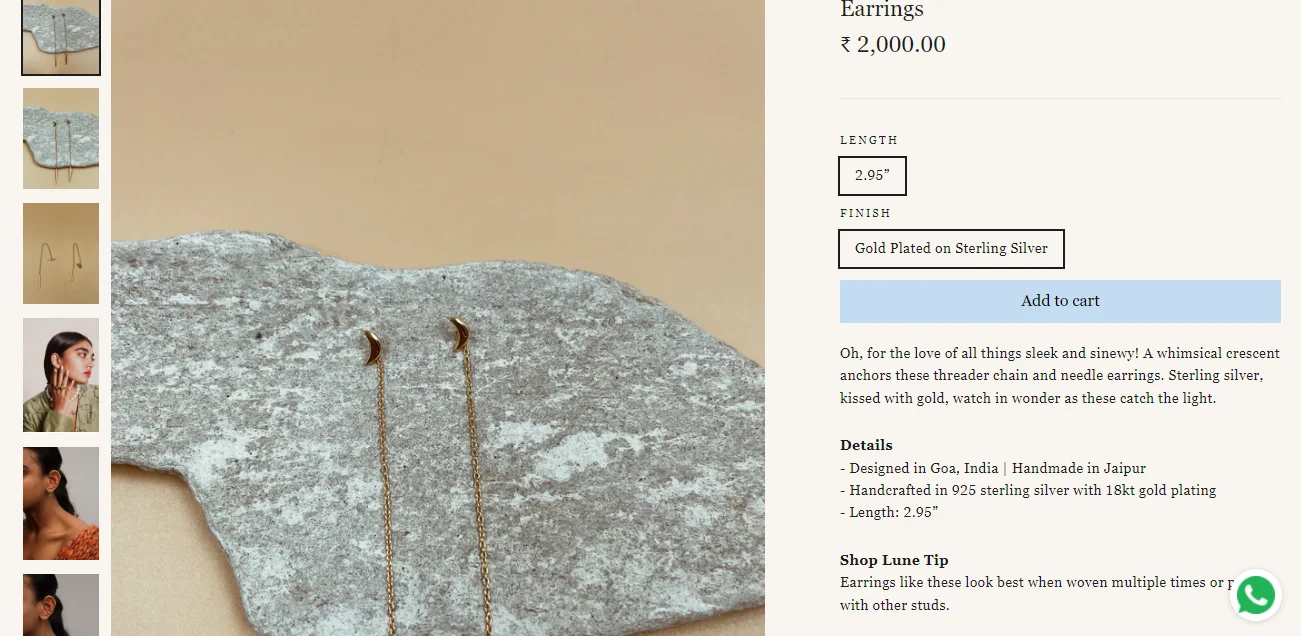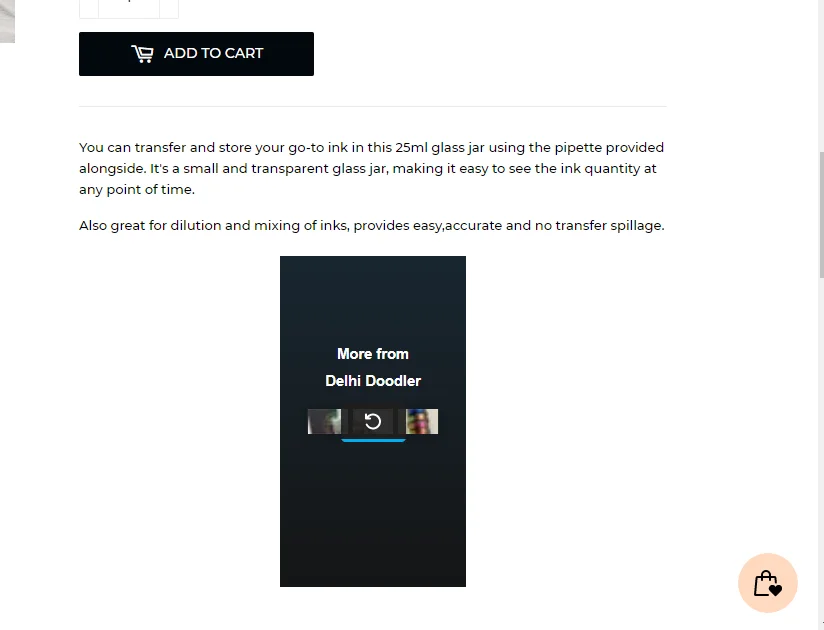Introduction
What’s one emoji that crosses your mind when you think about your eCommerce store?
If that’s dollars, you are already winning the game to a million-dollar eCommerce store or are struggling to convert the visitors into customers and losing sales consistently. Are you the latter one? Well, you’ve come to the right place. With a few strategic tweaks to your site, you can change the scenario and boost your revenue.
In this article, we’ll cover what is eCommerce optimization and the 6 different ways to optimize your eCommerce website.
Let’s roll in.
What is eCommerce Optimization?
eCommerce optimization is the process of making strategic tweaks in the eCommerce store to improve turn visitors into customers.
6 Strategies for eCommerce Optimization
Here we have curated 6 strategies to up your eCommerce store’s profitability.
#1. Promote Pay Later Options
Online purchases using ‘Buy Now Pay Later’ services are growing at a rate of 39% per year. Isn’t that massive? With this payment option integrated into your eCommerce website, you offer flexibility to your customers to buy the product now and pay for it later, over a period of installments.
Even the biggies in the eCommerce industry like Myntra, Flipkart, and Amazon have already adopted the pay later policy to accelerate their profits. Some more perks Pay later option includes:
- High conversion rate: There might be times when customers want to make a purchase but refrain from doing it because of lean cash flow. Result? Lost sales. With the Pay Later option on your eCommerce website, you can retain these customers by offering them affordability and the convenience to make payments in installments.
- Increased order value: You can sell high-valued products to customers and offer them to pay in installments. This enables an increased order value for your business and the customers to buy from the brands without worrying to make huge payments all at once.
- Improved customer experience: Customers are happier when they get flexibility in their buying decisions.
This is why big giants like Myntra, Flipkart, and Amazon are offering Pay later options to their customers to make their purchase process seamless.
Let’s take the example of Myntra

On their payments page, Myntra offers two to four pay later options to their customers. These include Flipkart Pay Later & Zestmoney
This not only delights the customer to pay for their purchase the next month but also provides them the flexibility to choose from different EMI partners.
#2. Offer Shopping Guides
Offering shopping guides is a great way to guide the buyers and help them better their buying decisions. You could do this by featuring the best-selling product or seasonal gift guides on the navigation menu.
Nykaa does this exceptionally well by displaying its best-selling brands.

On the navigation bar, the buyer sees shopping guides like ‘Half Price’ and products from top brands like MCaffeine, Plum,, and more on the top. Showcasing the best brands with the discount offers upfront is a great way to convince the buyers to check out the products.
Additionally, Nykaa embeds informational blogs related to a specific brand. When the buyer scrolls the products from the brand, they see the blogs too. In this example, when the buyer clicks on the MCaffeine’s product range, they will see blogs embedded with the products that educate them about MCaffeine’s products.

This is a great way to educate the customers about the product to make their buying decision easier.
#3. Reduce cart abandonment
Cart abandonment is a bigger problem for eommerce businesses. And the best way to deal with it? Offering the customers’ coupon codes on the checkout page. Coupon codes are great when pushing the buyer to make the purchase but often reduce the actual value of your product. Not that great deal, right? Instead, you can offer physical products to your customers at a certain order value.
Sugar does this whenever someone purchases products from them.

Doing this has two results:
- It delights the customers because they get more products (free of cost)
- Brands get their product tested by the existing customers and if the customer likes the product, they will be the next time and in turn retain their existing customers
#4. Optimize your pricing
Pricing is the deal-breaker when selling products on your eCommerce store. And if you don’t do it right, who will buy from you? With a few tweaks, you can pull off the pricing.
Compare two products
How often do you see comparison blogs that compare two products? That’s what you need to do too. Put two products, one high-valued and the other low-valued side-by-side. Chances are shoppers will go for the best product after seeing the comparison based on features and price. When people are offered two options to choose from, the probability of making the right decision is 50%.
Look at the classic example by Amazon where they pick up three to four products and compare them based on prices and the features they offer to the shoppers.

Use charm pricing
With this psychological pricing strategy, you basically reduce the round number by one cent or include the pricing with 9 and 99 at the end.
For example, writing your price as $5.99 instead of $6.
This strategy works effectively because of the psychology behind it. The pricing involving 9 at the end is usually considered smaller and cheaper. How? Taking the above example, if you have two products for $299 and $300, the former is considered cheaper because it falls in the numeric row of two while the latter falls in the row of three. This happens because people will observe the starting digits of the pricing more.
Promote buy one, get one free offer
This pricing strategy works well as the customers pay in full for one product and get the next set of products for free or at a discounted rate. However, this strategy has been used in the world of eCommerce in the long run. So, to spice your sales up, you can tweak it in the following ways:
- Buy one, get three for free
- Buy one and get 15% off on your next purchase
- or, Buy one and unlock 4 bonuses worth $299 for free
Here’s an example of how Max features this offer on the top of their website.

Use clear CTA
To direct the buyers to make the buying decision, you need to have crystal clear CTAs right in front of them.
- When using CTAs, make sure you use action keywords like ‘buy now, ‘add to cart’, etc.
- When adding CTAs in the popups, highlight the key information like the discount code.
Feature the savings
Display the savings the buyer will get on their purchase. Put them right beside the price of the product. When you display the savings, the buyer knows the value they get—meaning, the benefit they get.
Rubans does this well by displaying the actual product price, the discounted price, and the savings the shoppers will make.

#5. Improve your product pages
The first step to making the shopping experience seamless for customers is easy navigation. Here are a few best practices to do it:
Use breadcrumbs based on your product hierarchy and the user’s history
Breadcrumbs typically are located at the top of your web page and tell the users exactly which page they are browsing.
- Product hierarchy: It displays the inventory tracking webpage you are currently on and displays the parent page too. This breadcrumb navigation helps organize the products and access the database of products in your inventory.
- History-based: It displays all the locations the user visits on the website. This helps when the eCommerce site has complicated web page names or when the user has been browsing for a longer duration. Moreover, with this breadcrumb feature, the user can come back and forth to their history and navigate with ease.
Leverage SEO in your product listings
How? Optimize the product titles with high-ranking keywords your users are searching for. To find the right set of keywords, research them on Google Trends, Quora, and Reddit. Once done, create a set of keywords and include them in your product titles.
Look at the below example by Shoplune. Here, they have the threader earring. Because people are looking for threader earrings on google, adding the keyword ‘threader earring’ is how you optimize your product title.

Furthermore, include product descriptions. Product descriptions are lost undervalued assets for optimization on your eCommerce website which most businesses neglect. Right after optimizing your product headline, write a description of your product.
Include product images from different angles
A single image of your product won’t give the buyer the inside scoop of what your product looks like. So adding images from different angles is great. Even better if you include videos of how to use the product.
Here’s an example by Delhi Doodler where she takes images of her product from different angles and also inserts videos of the product showcasing the real example of how the buyer can use the product.

Add customer ratings and testimonials. You can place these ratings for each product based on the different focus areas. When including testimonials, encourage customers to share video testimonials.
#6. Use Live Chats
Live chats are the X-factor when capturing leads on your eCommerce store. When the buyer visited your store, they will:
- Scroll through product pages
- Stay on the page and read about products
- Make the decision to not buy and leave
Buying decisions are influenced by several factors but allowing them to chat with businesses reduces the chances of them leaving the site and going to your competitor’s website.
Add a WhatsApp integration to your website. With this, shoppers can quickly send your business a message and increase the chances of conversion.

Frequently Asked Questions
1. What is a good conversion rate?
Conversion rate is typically the number of people who take action on your eCommerce store like saving the item into the wishlist, adding the item to the cart, or making a purchase, an action somewhere around 2% to 4%. However, this varies based on industries. A good conversion rate is somewhere around 2% to 4%.
2. How do you calculate conversion rates?
Calculating the conversion follows a simple formula i.e. dividing the number of sales by the total number of leads and multiplying it by 100 to get the percentage.
Conversion Rate = (Number of sales / Number of leads)*100
Getting Started..
Ultimately, the winning secret to more sales boils down to fixing the leakages in your eCommerce website and optimizing it. A good way to accelerate your efforts is by studying the current conversion rate of your website first.
Start by improving the product pages – maximize the seamless navigation, customer testimonials, and keywords inside your product titles and descriptions.
If you’d like to pick up the pace, leverage the Pay Later option and integrate live chat to see how buyers react to the new optimization techniques and whether or not they convert.